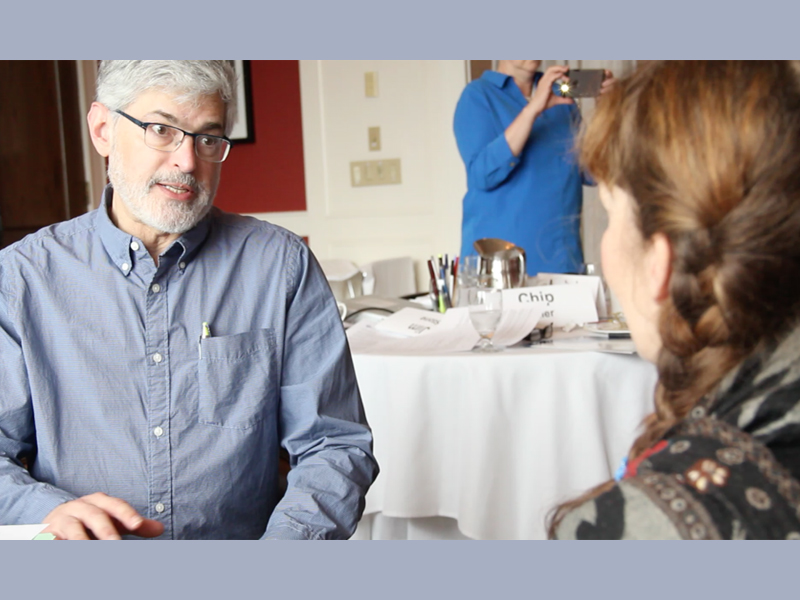Another Type of Time Distortion

Another Type of Time Distortion
The saying goes “time flies when one is having fun.” Unfortunately, in modern healthcare time whooshes by on clock time, and there is no fun in the speed. Patients then leave with the feeling of not having been given enough time or having been heard. Thus two weeks ago during a Comfort Talk® training at the Ohio State University, I was thrilled to realize a very beneficial type of time distortion that can happen even during short communications.
We conducted our usual “Microteaching” or “Rotating Peer Supervision” exercise” where healthcare professionals practice their new Comfort Talk techniques (1). One person assumes the role of communicator/healthcare professional and plays out a new skill in a challenging scenario with a conversation partner who assumes the role of patient. And these role plays become real very quickly! The interaction is captured on video and then the healthcare professional leaves the room to watch the video. At the same time the peer consultation group reviews the performance. Both parties do so by answering in sequence what was done well, whether the stated objective of the practice was achieved, and what could have to be done differently. Upon return the communicator and consultation group share their assessment. This is a very popular exercise helping self-reflection, feedback, and also insight.
Up to 5 minutes are allowed for the videoed interaction. In one set, the conversation partner played the very demanding “patient” who doesn’t seem to be able to stop asking tangential questions over and over again. The communicator skillfully used one of the techniques she had just learned and the patient became very relaxed and cooperative. When we stopped the video since all was done, everyone was awed that this had just taken 2 minutes. One participant commented it had to have been at least 5 or 10 minutes, a sentiment echoed not only by the other observers but also by the communicator and the communication partner. But the recorder didn’t lie. It only took 2 minutes.
This experience emphasized that when one can get to what moves a conversation partner right away and responds in a patient-centric fashion, the feel of the interaction changes. It becomes quality time which is experienced as much longer than it actually takes. Made aware of the effect, we consciously looked at how long interactions took in the next rounds. And it happened again. One trainee, who was particularly skeptical of the whole concept, decided to practice the study script for her skill set. She was astonished how fast it actually went and that it seemed so much longer. She was converted to Comfort Talk right there!
Time distortion in medical communication has also been described when healthcare professionals sit down with the patient. Patients report having had more time spent with them (2). In the type of time lengthening distortion I witnessed last week consciously during the exercise, it seems that in a meaningful conversation each second counts more.
To conclude: Taking the effort and using advanced communication skills pays off big-time: It saves time while making time spent precious and leaving the good feeling of a job well done.
References
- Lang EV, Sood A, Anderson B, Kettenmann E, Armstrong E. Interpersonal and communication skills training for radiology residents using a Rotating Peer Supervision Model (Microteaching). Acad Radiol. 2005;12:901-8.
- Swayden KJ, Anderson KK, Connelly LM, Moran JS, McMahon JK, Arnold PM. Effect of sitting vs. standing on perception of provider time at bedside: a pilot study. Patient Educ Couns. 2012 Feb;86(2):166-71. PubMed PMID: 21719234. Epub.
